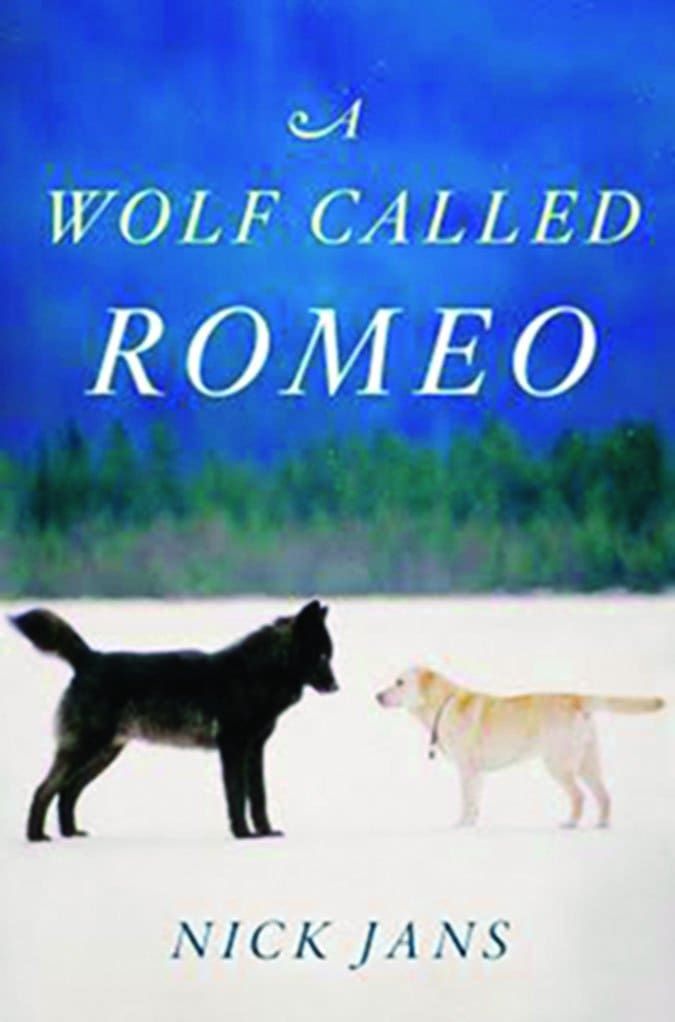Last month, I described my favorite dog books – at least, those that have been published in the past year or two. Once I started listing them, I couldn’t stop! Here are more of the books I find myself thinking about, going back to read (or in the case of a few photography books, just look at and enjoy), and buy for friends. I’ll start with the coffee-table worthy photo books.
The Black Dogs Project: Extraordinary Black Dogs and Why We Can’t Forget Them

by Fred Levy
Race Point Publishing, 2015
Hardcover, 128 pages, $26
We love looking at great photos of dogs, but The Black Dogs Project aspires to more than just entertaining dog lovers. When animal photographer Fred Levy learned that black dogs in shelters are often the last to be adopted and first to be euthanized, he didn’t believe it. But when he investigated, he learned that the bias against black dogs is real, and it’s a serious problem. This led to a series of elegant, somber portraits of black dogs, complete with their stories.
Originally a Tumblr blog that went viral (caninenoir.tumblr.com), the photos support the adoption of black dogs. In a March 2014 Huffington Post interview, Levy explained, “I thought this project would be a good graphic challenge. . . .
I want to bring awareness to this issue and remind people who are searching for the perfect dog that black dogs have great personalities, too.” Levy is donating a portion of the proceeds to a group called Labrador and Friends in support of the adoption of black dogs.
The Dogist: Photographic Encounters with 1,000 Dogs
by Elias Weiss Friedman
Artisan, 2015
Hardcover, 304 pages, $25
Photographer Elias Weiss Friedman, who launched his blog and Instagram feed
(@TheDogist) in 2013, captures the personalities of a thousand dogs of all breeds, shapes, ages, sizes, and attire in a coffee-table book that reviewers and fans call endearing, delightful, emotional, spontaneous, caring, and can’t-put-down wonderful.
Shake
Shake Puppies

by Carli Davidson
Harper Design, 2013 and 2014
Hardcover, 144 pages, $18
Photographer Carli Davidson captures dogs and puppies in the middle of that magical moment: mid-shake. Their eyes bulge and their ears, tongues, and bodies go in all directions in vivid colors and perfect focus. You’ve watched your dog shake a million times, but the action is simply too fast to see. Take a look at these dogs of every breed and size and your own will look different next time. Better yet, try to capture your dog in mid-shake with cell phone or camera, and you’ll appreciate Davidson’s skill.
After the initial success of Shake, Davidson focused solely on puppies for a follow-up book, Shake Puppies; her newest work is Shake Cats! Most animal lovers call these books fun, uplifting, adorable, hilarious, personality-capturing, and stress-reducing.
Underwater Dogs
Underwater Puppies
by Seth Casteel
Little, Brown and Company, 2012 and 2014 respectively.
Hardcover, 132 and 128 pages, $21
Self-taught photographer Seth Casteel was working with Buster, a Cavalier King Charles Spaniel, in the dog’s backyard when he wondered what the enthusiastic swimmer would look like underwater. He left to buy an inexpensive underwater camera and Buster became the first in a series of bug-eyed, ball-chasing, fang-showing, bubble-surrounded swimming dogs. Casteel then maxed his credit card buying a camera housing designed for surf photographers, and the investment paid off when the world noticed his startling, entertaining underwater photos. Casteel’s pictures are featured in annual calendars, children’s books, address books, and other products.
Underwater Dogs was followed by Underwater Puppies, Underwater Dogs Kids Edition, and (to be fair) Underwater Babies.
Casteel also photographs homeless pets for shelters and rescue organizations around the world, in order to help animals find forever homes. See his blog at sethcasteel.com.
Man’s Best Hero: True Stories of Great American Dogs

by Ace Collins
Abingdon Press, 2014
Paperback, 208 pages, $16
Who doesn’t love a good dog story? These hero dogs – mostly household pets – rose to the occasion when their humans were drowning, on fire, about to be run over, or simply discouraged and depressed. They are all sizes, ages, and conditions, and their stories are old (Stubby, the most decorated dog of World War I) and new. This straightforward, entertaining collection can be read in small sections or straight through, and it’s appropriate for all ages. Best of all, though it mentions Lassie, Rin Tin Tin, and other famous canines, the book’s main focus is the everyday family dog.
Real Dog Yoga
by Jo-Rosie Haffenden
First Stone Publishing, 2015
Paperback, 128 pages, $17
This English import offers step-by-step instructions for enhancing the human-animal bond with exercises that come naturally to dogs.
Author Jo-Rosie Haffenden is not a fan of Doga, the yoga-for-dogs classes in which small dogs are lifted into the air, pinned to the floor, or propped on the owner’s back. Instead, she combines 30 canine postures (safe and comfortable positions), 15 expressions (slow and calm actions), and 10 communication expressions (mostly facial or vocal) with force-free training and respect for dogs.
Detailed instructions for clicker training, verbal cues, and shaping are organized into sessions and sequences that combine body consciousness with mental focus. The result: calm, relaxed dogs, enhanced overall health, and improved dog-handler communication.
Teaming with Your Therapy Dog

by Ann R. Howie, LICSW, ACSW
Purdue University Press, 2015
Paperback, 161 pages, $17
If you’re at all interested in animal-assisted therapy, you’ve probably heard of Ann Howie. For the past 30 years she has incorporated animals into acute-care hospitals, skilled nursing facilities, home health and hospice care, in-patient psychiatry, and the ever-expanding world of therapy pet training and registration.
A popular conference speaker, Howie focuses on positive training methods and a strong bond between dog and handler in which the dog is an equal partner.
Her 13-point “Therapy Dog’s Bill of Rights” begins with “As a therapy dog, I have the right to a handler who obtains my consent to participate in the work.” Too often, she says, therapy dogs are put to work with little regard for their wants and needs.
The Bill continues, “As a therapy dog, I have the right to a handler who provides gentle training to help me understand what I’m supposed to do; is considerate of my perception of the world; helps me adapt to the work environment; guides the client, staff, and visitors to interact with me appropriately; focuses on me as much as the client, staff, and visitors; pays attention to my nonverbal cues; takes action to reduce my stress; supports me during interactions with the client; protects me from overwork; gives me ways to relax after sessions; provides a well-rounded life with nutritious food, medical care, physical and intellectual exercise, social time, and activities beyond work; and respects my desire to retire from work when I think it is time.”
In addition to elaborating on these points, Howie describes different ways of handling therapy dogs, the importance of being fully present on visits, and how to understand a dog’s behavior, maintain close proximity to your dog on visits, improve your observation skills, support your therapy dog with touch, speak conversationally, and combine all of these ingredients for effective, satisfying results. A dog behavior checklist and resources complete this readable, thorough, and very useful book.
What the Dog Knows: The Science and Wonder of Working Dogs
by Cat Warren
Touchstone, 2015
Paperback, 343 pages, $16
Dogs have all kinds of jobs, but the ones we call “working dogs” are the most physical. These include military, police, bomb-sniffing, drug-sniffing, search and rescue, and cadaver dogs. They need stamina, strength, intelligence, good handlers, and excellent training.
Thanks to Cat Warren, we bystanders can have an intimate, inside view of cadaver dog training and handling, along with insights into the training of all working dogs. Warren, who lives in North Carolina, describes every aspect of her development as a handler and the training her dogs received, with important help from experts who were generous with their time, advice, and attention to detail.
“I blame Solo, my third German Shepherd, for this book,” she explains at catwarren.com. “The dog didn’t eat my homework. He became my homework. I finally stopped making excuses to colleagues about the time I spent working and learning with Solo and conceded that I had become a sniffer-dog nerd.”
Some of Warren’s most interesting descriptions involve the ways in which we humans interfere with our dogs’ training by projecting our own expectations, which are often wrong and which easily mislead our dogs. She explains how the illegal and unethical actions of a few dog handlers caused innocent people to be arrested and, when the errors were discovered, resulted in expensive exonerations and a general discrediting of canine testimony.
Readers involved in scent tracking and nose work should find Warren’s descriptions of blind and double-blind training methods interesting. Correct and careful training from the beginning can help prevent both dog and handler from making serious mistakes.
The research that went into this project (several pages of acknowledgments detail the participation of leading trainers) makes What the Dog Knows far more than a personal memoir. This is an exciting book full of useful information.
A Wolf Called Romeo

by Nick Jans
Manner Books, 2015
Paperback, 288 pages, $15
Though wolves are more common in Alaska than the rest of the U.S., it was still thrilling when Nick Jans and his wife saw a black wolf in December 2003, as they walked with their yellow Lab, Dakotah. Suddenly the wolf ran straight at them, stopping 40 yards away, stiff-legged, tail raised, in a dominant posture. Dakotah, who was half the wolf’s size, moaned and broke away from her humans, ignoring their cries as she skidded to a stop by the wolf. “She stood tall, her own tail straight out,” writes Jans, “and as we watched, mouths open, the wolf lowered his to match.” Then the wolf bowed, lifted a paw, and the two animals watched each other intently while Dakotah sidled closer and circled.
So began a relationship between the wolf and Jans’ dogs, and through them with Jans himself, one that lasted for the rest of Dakotah’s life and beyond. For six years the gentle black wolf returned to play with Juneau’s dogs, follow cross-country skiers, and nap near his friends in the sun.
At first a handful of residents and their dogs were the only ones who knew about the wolf, but word – and publicity and controversy – soon spread. It wasn’t long before curious or uninformed people were putting their dogs and themselves at risk by getting close or even pushing their dogs toward the wolf for play. To his credit, Romeo, as he came to be called, was well behaved. By all accounts intelligent, curious, and in excellent health, the black wolf captivated photographers and animal lovers, and he inspired Jans and others to study the history and nature of wolves in detail.
Alas, Romeo’s story has a sad ending, one that still frustrates Jans. You may learn more than you wanted about politics and the legal aspects of wolf management, but Jans’ breathtaking photos and haunting descriptions of Romeo will stay with you.






